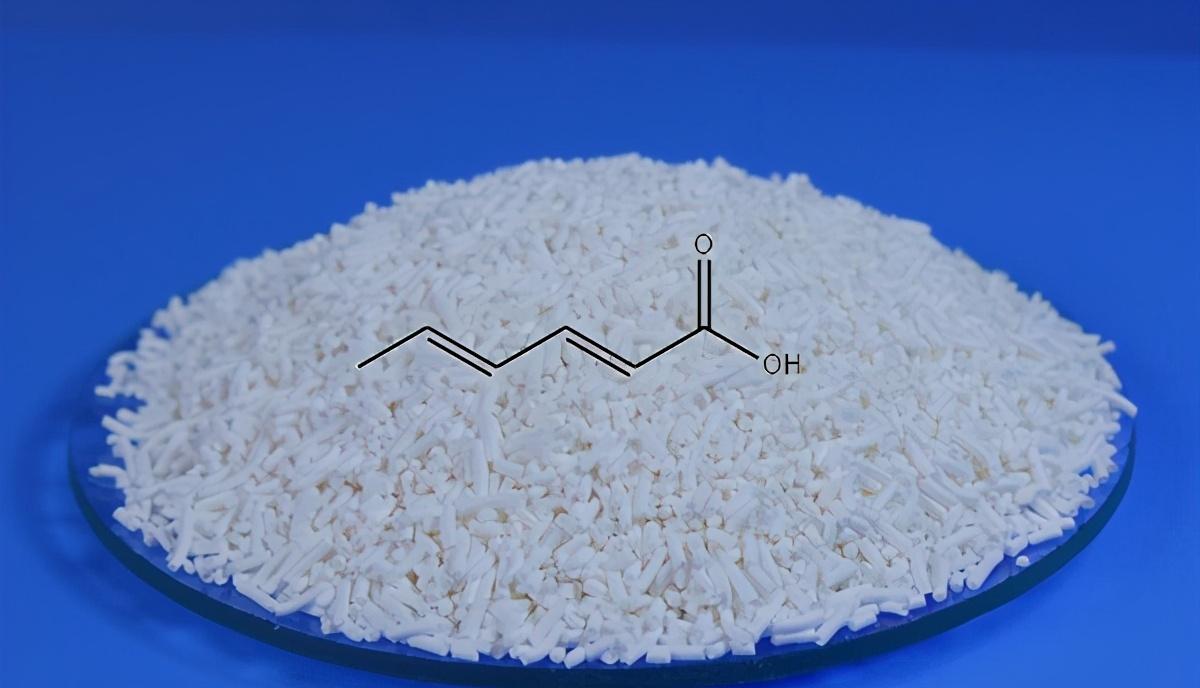Nowadays, supermarket shelves are full of things, drinks, pickles, cans, noodle sauce... Pick up a piece that at first glance looks like the ingredient list has more or less the same additive - sorbic acid. This is a kind of food additive, is an acid preservative, today please come with Cheng Cheng Xiaobian to understand the relevant knowledge of sorbic acid.

Sorbic acid, also known as cool tea acid, 2,4-hexadienoic acid, 2-propenyl acrylic acid, the molecular formula is C6H8O2, as a food additive, has an inhibitory effect on yeast, mold and many other fungi. Nowadays, it has been widely used in food, beverage, pickle, tobacco, medicine, cosmetics, agricultural products, feed and other industries, and its application scope is still expanding from the perspective of development trends. Next, we will learn the food additive sorbic acid implementation standard - "GB1886.186-2016 Food Safety National Standard Food Additive Sorbic Acid".
The standard stipulates that sorbic acid is generally a white or white powder or granule, and the physical and chemical indicators are sorbic acid content, which is required to be above 99%; the melting point range; the moisture should be within 0.5; the burning residue; the aldehyde and the requirements of heavy metal lead, and the metal lead content should be less than 2mg/kg.
The amount of sorbic acid in plastic barrels of concentrated fruit and vegetable juices shall not exceed 2g/kg; the maximum use of soy sauce, vinegar, jam, hydrogenated vegetable oil, fudge, dried fish products, instant soy products, pastry fillings, bread, cakes, mooncakes is 0.8g/kg; the maximum use in wine and cider is 0.8g/kg; the maximum use in collagen casings, low-salt pickles, sauces, preserves, juice (flavored) beverages and jelly is 0.5g/kg The maximum use in fruit and vegetable preservation and carbonated beverages is 0.2g/kg; in the food industry, the maximum use amount can be used in meat, fish, eggs, poultry products 0.075g/kg.
Cheng Cheng Xiaobian Conclusion: Sorbic acid and potassium sorbate (GB1886.39-2015) are the most widely used preservatives in the world, with high antibacterial properties, inhibit the growth and reproduction of mold, by inhibiting the dehydrogenase system in the microbial body, to inhibit the growth of microorganisms and play an antiseptic effect, and inhibit mold, yeast and many good gas bacteria. Widely used in cheese, yogurt and other cheese products, bread snack products, beverages, juices, jams, pickles and fish products and other food preservatives. However, the specific dosage is strictly regulated, reminding the majority of manufacturers to use and add in accordance with the specifications for food safety.